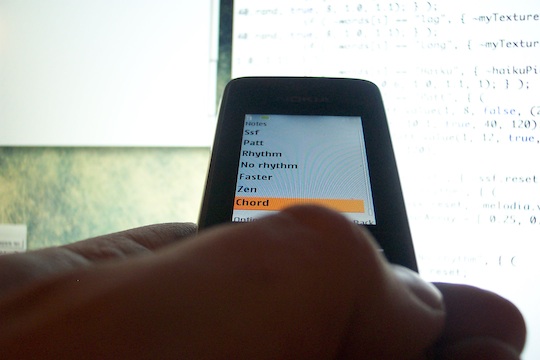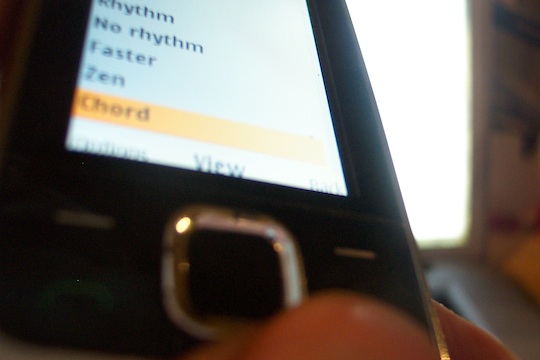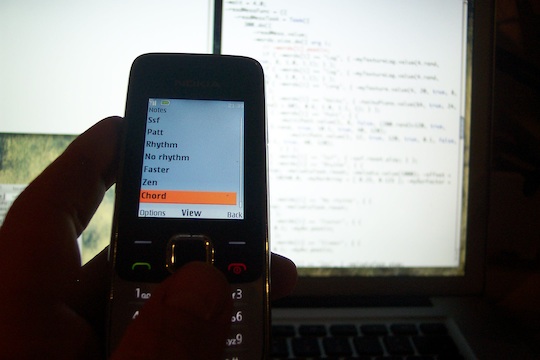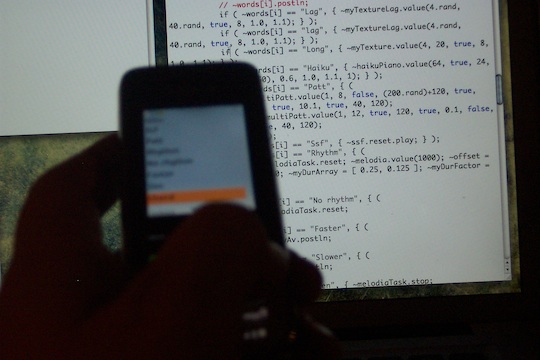rhoadley.net music research software blogs
vimeo youtube gallery
five pieces sextet through the sharp hawthorn only connect in principio miscellaneous concertino three pieces for two pianos four archetypes petrochemicals copenhagen ambience hello histrionica telephony many worlds 127 haiku 128 haiku triggered touching sound 127 messages
calder's violin fluxus fluxus tree player piano three streams quantum canticorum december variations december mobile semaphore piano glyphs how to play the piano choreograms edge violations homage unthinking not songs graffiti
devices: gaggle gagglina wired threads glyphs metapiano digiphone
NB All material on this site is © Richard Hoadley (and others), 1980-2023
One Hundred and Twenty Seven Messages
composition/performance controlled by mobile devices




|
127 Messages is a combination of composition, performance and improvisation. It is generated by those present who are invited to send messages in the form of small text files from mobile devices ('phones, palm and laptops, etc.) wirelessly to a central computer. In 2004 Lorstad et al. developed the Intelligent Street in which members of the public audience were invited to send SMS (short message service) text messages containing particular expressions. These messages were read and stored; they were then used to guide the algorithmic generation of material. Disadvantages of using SMS include the fact that there is a fee generated with each message; in addition there is significant latency between the sending, registering and implementation of a message, issues which do not apply to 127 Messages. Disadvantages of the presented system include the fact that people seem less aware of the file-creation capabilities of their devices: different methods of access and formats of the 'notes' used by different devices add a layer of complication to the project. In 127 Messages software attempts to read or otherwise extract text from files it receives - this information is used to generate, trigger and control a stream of algorithmically generated sound, creating a tapestry of textural, rhythmic and melodic elements. The system is experimental and in development: other forms of messaging are being investigated. Performances provide an opportunity to test different devices. They also allow studies into the nature of interaction: the effect of direct triggering as well as analysis of data collected over longer periods, and how these factors combine to create meaningful aesthetic communications. Lorstad et al, 2004, The Intelligent Street: responsive sound environments for social interaction, Proceedings of the 2004 ACM SIGCHI International Conference on Advances in Computer Entertainment Technology |